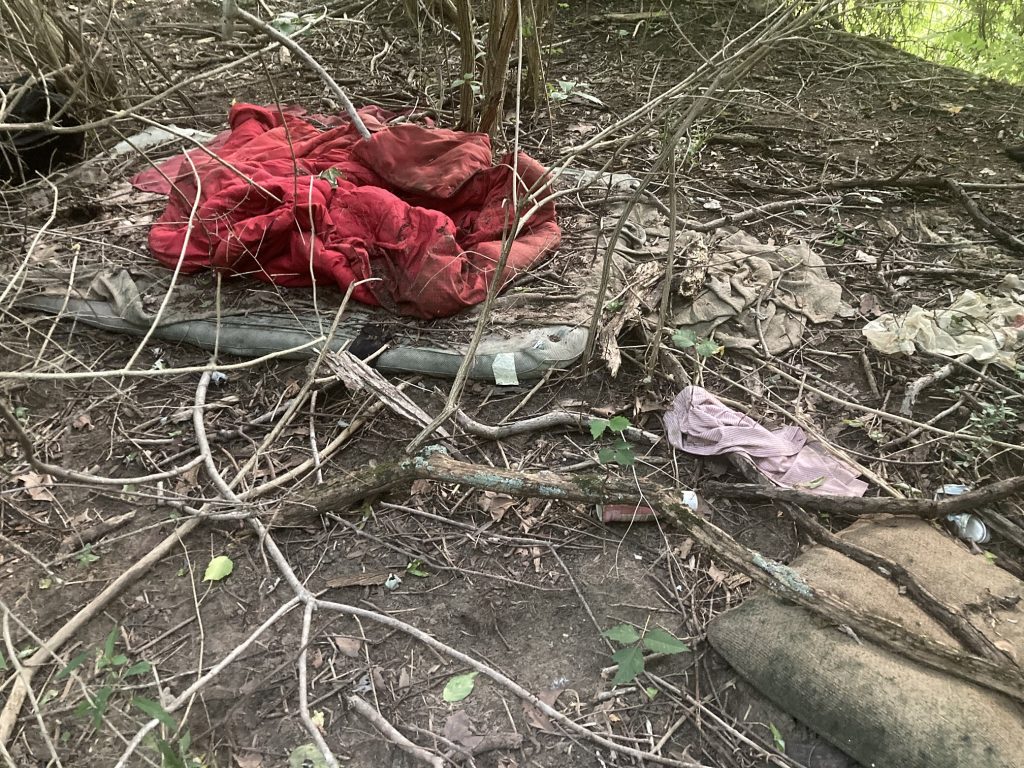News
Athens residents who experience homelessness find they have few places to go for shelter
By: Theo Peck-Suzuki | Report for America
Posted on:
ATHENS, Ohio (WOUB/Report for America) — Many people facing homelessness in Athens County have nowhere to go for shelter, and local agencies are struggling to find a solution.
One of those organizations, My Sister’s Place, provides shelter to victims of domestic violence. Its executive director, Kelly Madewell, said they get three to five calls a day from individuals who don’t fit their target population but need a roof over their head.
“We are always full, and we turn away a lot of people,” Madewell said.
Part of the problem is the absence of an emergency homeless shelter. Athens County does not have such a facility.
The one homeless shelter that does exist, Timothy House, no longer offers emergency services.
“It’s not sustainable,” founder Keith Wasserman explained. “You can’t have staff that are equipped to deal with the complexities of the issues that people are bringing in.”
Madewell said people call My Sister’s Place because it has earned a reputation as somewhere to find help.
“Unfortunately, we really have to stick to our population, because the need is so great there,” Madewell said. “We have a 24/7 security system, we have 24/7 staffing. So we really have to maintain our beds for people who need all those security measures.”
Nevertheless, Madewell said her staff won’t just leave callers to fend for themselves.
“We will go out of our way to try to help people on our hotline, even if they don’t fit squarely in our population, because we feel this obligation to help when someone is presenting with a problem,” Madewell said.
Madewell said those experiencing homelessness in rural southeast Ohio are often entire families, including small children.
“They’re just very vulnerable,” she said.

Today, Timothy House has a screening process that takes a few days to complete. It has four bedrooms, two of which are typically set aside for families. In total, Wasserman said the house has capacity for 15 people.
“We do an interview with them on the phone, and then generally we set up what we call a pre-admit interview, where we see them face-to-face and we talk about what they’ve said to us on the phone and we talk to them about their situation,” Wasserman said.
There are times when Timothy House decides the person in question isn’t an appropriate fit.
“Some people have too many flags. There’s issues, there’s a serious addiction issue that they’re in denial of. So we only take people who are committed to some kind of recovery,” Wasserman said.
That excludes a significant portion of the homeless population in the area. Madewell said it’s not uncommon for individuals struggling with housing to also present with substance use disorders.
“That’s often part of coping with trauma,” Madewell said.
Madewell said individuals like these could benefit from an emergency shelter. Such a facility could keep people safe in the short term and connect more individuals with services. Madewell referred to this as the “continuum of care”: the pipeline to stable housing.
At the same time, Madewell cautioned that a new shelter would not address homelessness effectively in the long term. She said doing so would require tackling the lack of affordable housing in the area.
A study by the National Low Income Housing Coalition found keeping a two-bedroom rental in Athens County requires earning at least $17.81 an hour — equal to 1.8 minimum wage jobs.
Marcus Roth of the Coalition on Homelessness and Housing in Ohio echoed Madewell’s view.
“The primary cause of homelessness is the lack of affordable housing for people,” Roth said.
Ohio’s upcoming biennial budget includes a tax credit to construct what Roth said will be approximately 4,000 new low-income housing units statewide over four years.
He said it’s a promising first step but cautioned that more is needed. According to Roth, Ohio lost 15,000 affordable units between 2020 and 2021 alone as prices increased and many properties were converted to short-term rentals.
Roth said fewer landlords have been participating in low-income housing development projects because the opportunity cost is significant.
“Landlords now can just earn so much more money raising rents, going to the private market and not dealing with these (low-income) programs,” he explained.
“Statistically, we don’t have enough housing, period, for our population,” Madewell said.

